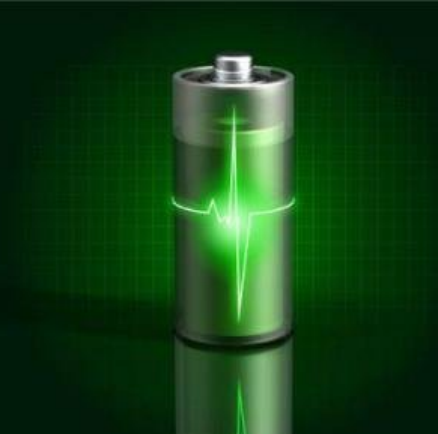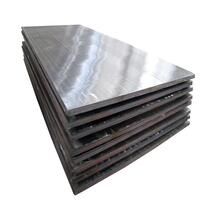1. Introduction
When you hear ‘metal clad,’ you might think of electrical wiring or industrial pipes. But in today’s architecture, metal clad has evolved into a sophisticated design language—blending engineering precision with bold visual impact. From sleek urban skyscrapers to minimalist mountain cabins, metal clad facades are redefining what modern exteriors can be.

Far beyond basic siding, advanced clad metals like corten steel, zinc, copper, and aluminum-clad composites offer unmatched weather resistance, longevity, and aesthetic flexibility. Let’s dive into how these materials are being used in niche, high-performance applications—and why they’re gaining traction among forward-thinking architects and builders.
2. What Does Metal Clad Mean in Architecture?
The term ‘clad metal meaning’ refers to a composite material where two or more metals are bonded together—typically a structural base (like carbon steel) with a corrosion-resistant outer layer (such as stainless steel, aluminum, or zinc). This fusion creates ‘clad metals‘ that combine strength, cost-efficiency, and surface performance.
In construction, ‘metal clad’ describes exterior systems—walls, roofs, or panels—made from these layered materials. Whether it’s a ‘steel clad house’ in the Rockies or a ‘zinc clad roof’ on a European museum, the goal is durability without sacrificing design.
3. Niche Applications Driving Innovation
Architects aren’t just using any old sheet metal—they’re specifying engineered solutions like ‘aluminum clad stainless steel’ for coastal environments or ‘titanium clad’ panels for extreme UV resistance. These choices solve real problems while creating iconic looks.
- Corten Steel Facades for Weathering Elegance
Corten steel siding—also called weathering steel—develops a rust-like patina that actually protects the underlying metal. A ‘corten steel facade’ requires no painting and ages beautifully, making it ideal for art installations, university campuses, and high-end residences. Though ‘corten siding cost’ can be higher upfront, its near-zero maintenance offsets long-term expenses.

- Zinc and Copper for Timeless Detailing
Zinc metal siding and copper siding are prized for their subtle sheen and self-healing oxide layers. You’ll find ‘zinc clad dormers’ on luxury homes and ‘copper siding’ accents on boutique hotels. Both materials last over 80 years and develop unique character over time—something paint can’t replicate.
- Standing Seam Systems for Seamless Performance
Modern ‘vertical standing seam metal siding’—especially systems like ‘PAC CLAD standing seam’ or ‘Colorbond standing seam’—offers clean lines and superior water shedding. Paired with ‘PAC CLAD coping’ and ‘column covers,’ these systems create monolithic exteriors that resist wind uplift and thermal expansion.
4. Beyond Aesthetics: Technical Advantages of Clad Metals
Clad metals aren’t just pretty—they solve engineering challenges. ‘Aluminum clad steel’ combines the lightness of aluminum with the strength of steel, perfect for large facade panels. Meanwhile, ‘stainless clad aluminum’ resists salt corrosion in marine settings better than either metal alone.
For insulation, ‘aluminum clad pipe insulation’ and ‘metal clad insulation’ wraps protect HVAC systems while reflecting heat. Even ‘metal clad wire’ (like CU clad wire or aluminum clad steel wire) leverages cladding for conductivity and durability in harsh environments.

5. Real-World Examples of Metal Clad Buildings
From the corrugated steel facade of a Tokyo art gallery to a ‘steel clad building’ in Chicago using ‘exterior corrugated metal siding,’ designers are pushing boundaries. One standout project features a ‘zinc facade’ paired with ‘PAC CLAD HWP’ panels, achieving LEED Platinum certification through passive solar control and recyclability.
Residentially, the ‘metal clad house’ trend is booming—especially with ‘metal weatherboard’ or ‘standing seam facade’ systems that mimic traditional wood but outperform it in fire and pest resistance.
6. Material Selection Matters
Not all metal plates are equal. Architects specify exact grades: ‘316 stainless steel plate’ for coastal zones, ‘6061 T6 aluminum plate’ for structural brackets, or ‘corten steel plate’ for exposed beams. Thickness matters too—whether it’s ‘1/8 inch steel plate’ for trim or ‘thick steel plate’ for load-bearing elements.
Finishes like ‘electroplating,’ ‘chromium plate,’ or ‘electroless nickel’ add further protection. Even ‘diamond plate steel’ or ‘aluminum checker plate’ finds use in functional areas like rooftop access or service corridors.
7. Sustainability and Future Trends
Most clad metals are 100% recyclable. A ‘zinc clad roof’ can be melted down and reused indefinitely. As green building codes tighten, expect more demand for ‘alloy clad’ systems like ‘2024 T3 clad’ or ‘7075 T6 clad’—originally aerospace materials now adapted for architecture.
Emerging techniques like ‘Inconel weld overlay’ or ‘chrome carbide overlay’ may soon enter architectural cladding for ultra-high-corrosion zones, such as chemical plants or offshore facilities.
8. Conclusion
Metal clad has moved far beyond utility—it’s now a cornerstone of high-performance, sustainable, and visually compelling architecture. Whether it’s a ‘steel facade’ downtown or a ‘zinc metal siding’ cottage by the lake, clad metals offer a rare blend of form, function, and future-readiness.
As material science advances and designers seek resilient, low-maintenance exteriors, expect ‘metal clad walls,’ ‘metal clad roofs,’ and innovative composites like ‘aluminum clad sheet’ to dominate the next generation of buildings.
Our Website founded on October 17, 2012, is a high-tech enterprise committed to the research and development, production, processing, sales and technical services of ceramic relative materials such as Metal. Our products includes but not limited to Boron Carbide Ceramic Products, Boron Nitride Ceramic Products, Silicon Carbide Ceramic Products, Silicon Nitride Ceramic Products, Zirconium Dioxide Ceramic Products, etc. If you are interested, please feel free to contact us.
